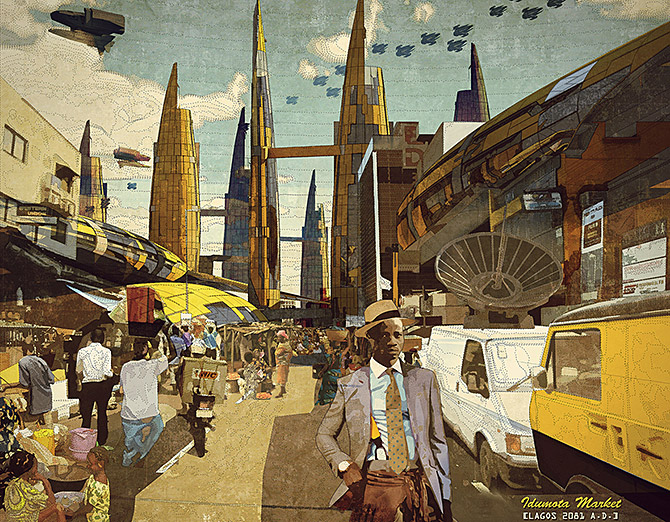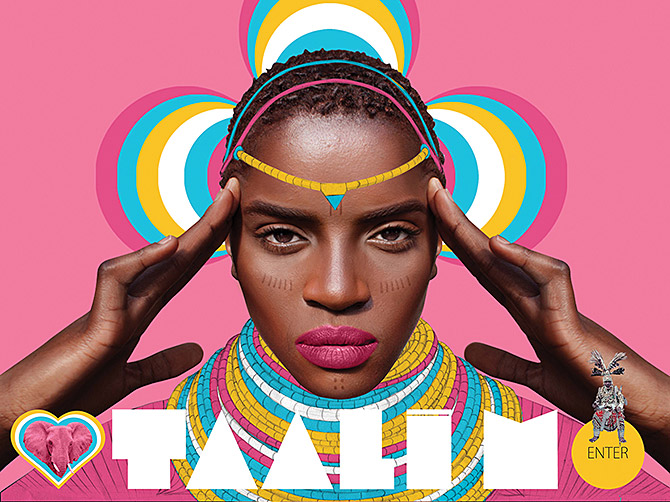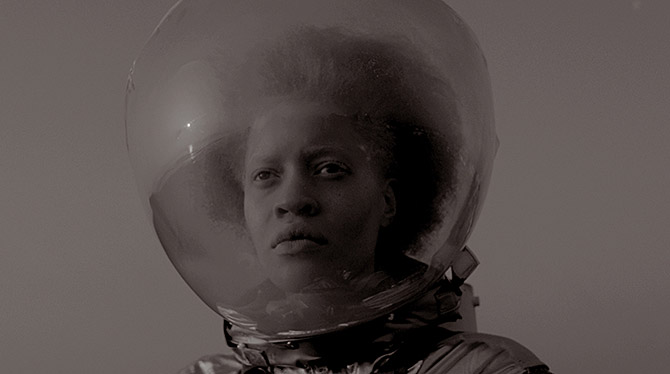Origin and future
Gallery 203
FILM SPACE
In this space two short films by young filmmakers are screened in loop during the exhibition.
A key role is played by Africa’s centuries-long history of colonialization and, in particular, a type of textile that erroneously became a symbol of (West) African tradition: Dutch Wax, also called Ankara. In the mid-nineteenth century, several Dutch and English companies commenced industrial production of Indonesian batik fabrics, among which Vlisco soon became the market leader (and remains so to this day). How the textiles made their way to Africa is subject to dispute, yet the colorfully patterned wax prints quickly grew so popular on the continent that they never really reached the originally intended Dutch market. Today many designers and artists make use of Dutch Wax for their creations. At the same time, an increasing number of critical voices have questioned the embrace of this colonial commodity.
We face neither east nor west, we face forward.
Kwame Nkrumah, first President of Ghana, in a speech in Accra, 1960
"We face neither east nor west, we face forward."
KTDA House (Chai House)
Until its demolition in the summer of 2014, the KTDA Chai House was the last widely visible and accessible proof of the lively Futurism, which, for a short, upbeat period, played a role in the urban, post-colonial Africa of the 1960s and early 1970s.
The self-confidence of an independent nation manifested itself in this building. Located in the centre of Nairobi, it represented Kenya’s greatest economic wealth after coffee: the KTDA is the tea growers’ interest group, who played a significant role in the decolonization process. Not satisfied with demonstrating their progressive stance with a mere modern office building, these representatives of modern agriculture treated themselves to a building extension in the form of a “flying saucer”: a round construction supported by a single column. The building’s annex harboured the popular New Florida Nightclub, where citizens of the Kenyan capital were able to celebrate themselves and their proud nation. Below it, a petrol station completed an unusual triad of building users. The building was included in a study by Basel-based architecture theorist Manuel Herz, who recently conducted a comprehensive study of Modern African architecture.
Ikiré Jones: Our Africa 2081 A.D.
The Escape to New Lagos, autumn/winter 2013/2014 collection was the first successful achievement of the Ikiré Jones label, led by Nigerian-born fashion designer Walé Oyédijé. The collection’s lookbook was illustrated by artist Olalekan Jeyfous, alias Vigilism, who transferred the smart, cosmopolitan Ikiré Jones man to a future scenario – Lagos in the year 2081.
Titled Our Africa 2081 A.D., this was the label’s founding myth, which was projected into the future and has been developed further ever since. So far, it has extended to other African metropolises: in six short, fantastically illustrated stories, scenarios unfold from Nairobi, Johannesburg and Lagos at the end of the 21st century. Whether utopian or dystopian, no single setting is completely invented, with a few realistic ties to the present.
Pierre-Christophe Gam: Taali M
The website of Taali M, a French singer of Congolese, Chadian and Egyptian descent, is an immersive experience of colour, sound and rhythm.
In a series of fantastic scenarios, which unfold as the user delves deeper into the website, the singer stands as a guiding presence, a symbolic and evocative figure that brings to mind a queen or priestess of ancient times. Pierre-Christophe Gam, the singer’s art director and the author of the website, describes the experience he sought to create as a teleportation to an African Kingdom. “We could either be in the kingdom of Congo, Dahomey or Mali, somewhere in the 13th or 14th century,” he says of the created ambiances, where symbols and colours are repeated with mysterious meanings, reinterpreted with contemporary flair. The website seeks to translate Taali M’s music – combining late 80’s pop rock, ska and ragga with traditional chants and rhythms from Africa – into a strong visual experience. “Taali M asked me to design a website that will feel like home,” Pierre-Christophe Gam says, noting how he aimed to create “a place where she will be able to share her music, videos and news, alongside with her dreams and aspirations.”
Frances Bodomo: Afronauts
The race to the moon was not just a fierce competition between the United States and the Soviet Union — the newly independent country of Zambia also dreamed up an ambitious space program, initiated by a teacher who applied for UNESCO funding for a private project.
Funding for the project never came through, and the Zambian program did not progress beyond the initial idea and some training with a 17-year-old prospective female space traveller. This peculiar story inspired young filmmaker Frances Bodomo. Particularly interested in the unwavering optimism behind this small, utopian endeavour, Bodomo believes Zambia’s space program to be a strong example for other global outsiders who have no chance to make a mark in world affairs. In her short film Afronauts, the sincerity and strength that is needed to push such a utopian project forward is depicted in striking images. Bodomo wants the film to inspire all those with similarly ambitious, far-fetched pursuits.



